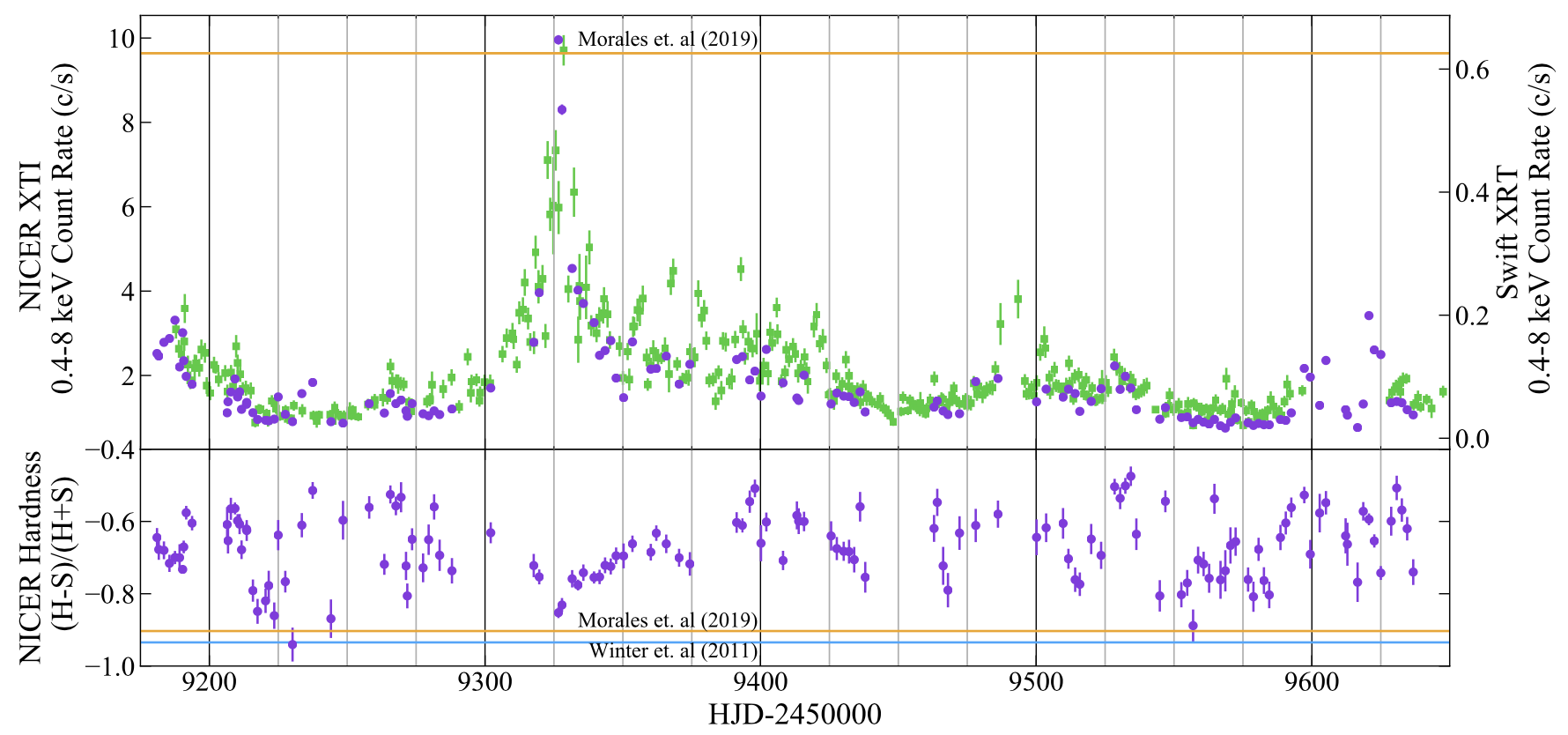NICER / ISS Science Nugget
for May 18, 2023
Piercing the veil
The only constant in life - and astrophysics - is change. The emissions of stars and galaxies vary on many timescales and for many reasons, and it's not always easy to discern among the possible explanations for these variations. When a distant point of light appears to grow dimmer and brighter, is it changing intrinsically in its luminosity, or is it being obscured by an intervening object or cloud, or is the variability due to some other process (such as the rotating "lighthouse" beam of a pulsar)? The clues we have to work with are the properties of the variability in time (e.g., what timescales, and are the modulations periodic or random?) and any changes in the wavelength content, or spectrum, of the emission.
The core of the galaxy Markarian 817 was historically known to be among the brightest in its class of active galactic nuclei (AGN); in these systems, accretion of dust and gas onto a supermassive black hole powers emission in the ultraviolet and X-ray bands. But observations of Mrk 817 in 2020 with NICER and other telescopes revealed it to be substantially (by 10-20x) dimmed. An analysis published by E. Kara (MIT) and collaborators in 2021 found the data to be consistent with absorption of the central engine's emissions by highly ionized gas along our line of sight. Also, modest variations in the received brightness could be attributed to changes in the density and ionized fraction of the obscuring gas. Since then, continued monitoring of Mrk 817 has revealed much larger-scale brightness changes, including a brief return to historical levels in April 2021. In a peer-reviewed paper recently published by E. Partington (Wayne State Univ.) and collaborators in The Astrophysical Journal, analysis of a NICER dataset spanning some 475 days has clarified the origin of these deep modulations: both intrinsic luminosity variations of the black-hole engine and changing density of the obscuring gas play roles, and their time-dependent contributions can be disentangled through spectroscopic analysis of the NICER data.
Supporting evidence for this picture comes from other observations made as part of the team's ongoing "AGN STORM 2" campaign: Hubble Space Telescope measurements of an absorption line thought to arise from the outer parts of the accretion disk around the black hole show changes that closely track the absorbing gas density inferred from NICER's X-ray spectroscopic measurements. Continued monitoring of the AGN in Mrk 817 with NICER and the other STORM 2 facilities will reveal the properties of the obscuring gas (density, ionization, clumpiness, etc.) and the role it plays in sculpting its host-galaxy environment.


Figure:
Purple points (error bars are often smaller than the plotted circles) represent NICER measurements of the photon count-rate (upper panel) and "hardness" ratio of high-energy to low-energy photon detections (lower panel) for Mrk 817, from November 2020 to February 2022 (dates shown in Heliocentric Julian Day, or HJD). The green points represent measurements made with the X-ray Telescope (XRT) onboard NASA's Swift observatory; the low Swift countrates preclude spectral measurements such as the hardness ratio. The orange horizontal lines (9.6 counts/sec in the upper panel) reflect measurements made in 2019, while the blue horizontal line shows a hardness-ratio measurement from 2011; the 2011 count-rate measurement, at 18.7 counts/sec, is off the chart. Figure from Partington et al. 2023
Example NICER spectra of Mrk 817 showing how obscuration by intervening gas (left) and intrinsic luminosity variations (right) can be disentangled. The obscuration change alters the low-energy content of the spectrum while preserving the high-energy (more-penetrating) flux; the luminosity change produces a nearly energy-independent rescaling of the spectrum. Figure from Partington et al. 2023.
<< Previous
Main Index